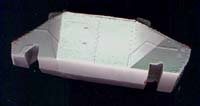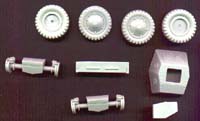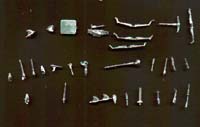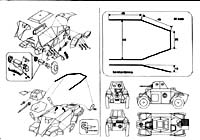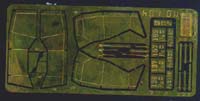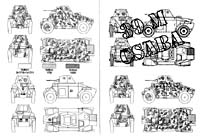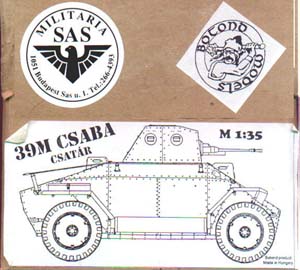Botond 1/35 39M 'Csaba' Hungarian Armored Car | | HISTORY In 1933, a Hungarian engineer, Miklos Straussler, was living in England. He came to an agreement with the Weiss Manfred Factory of Csepel, in Budapest, about producing prototypes of his special vehicles. One of them was an off-road armoured car, designed for the British Army. This was the AC I experimental vehicle, which was created in 1934. On the basis of the experiences of trials and fabrication a new enhanced version was designed and designated as the AC II. In this version a second driving position was created in the rear which was a must in scout cars. The modern construction, designed for military purposes, gained the Hungarian high command's approval. Trials with the AC II proved that the construction would satisfy the demands put on it by the Hungarian Army for armoured cars. The vehicle's turret was built with the guidance of the Hungarian Institute of Military Technology. The armoured car was made of 9mm armor plate with rivets. The form of the body was more modern and more successful than the English version. The vehicle was equiped with a 20mm heavy gun and an 8mm machine-gun. Both driving stations were covered by opening armored plates. In 1939, after the successful tests, the vehicle was supplied to the Hungarian Army under the name 39M Csaba armoured scout car. Meanwhile, 61 of them were ordered for reconnaisance units. Its engine was a 90 hp Ford engine, built in Koln, Germany. In 1940, another 40 cars were ordered. Twenty of them were straight armoured cars for combat and 12 served as command cars with radio equipment installed. The production of the next series of these cars was delayed until 1944 because of the greater importance of the Hungarian tank program. No records show that any more were ever produced. WHAT'S IN THE BOX: The kit comes in a brown cardboard box. There is a line drawing of the vehicle glued to the side of the box and two manufacturer's stickers stuck to the lid. Inside the box are 14 medium gray resin parts. These consist of the bull bottom, three piece hull top, four wheels, two axles, turret, two fender storage bins, and a long, skinny storage box for the passenger side of the hull. A zip lock cello bag holds a multitude of white metal parts that are for tools, antenna support posts, leaf springs, suspension arms , turret hatch door, etc. A length of brass wire is provided to do the banister type radio aerial. A fret of brass PE is taped inside the lid of the box. It provides the fenders, fender supports, and several license plates that have the license numbers double-etched into them. The instructions are a single 8 1/2" x 11" sheet, printed on both sides. On one side is exploded assembly drawings. A pattern, with dimensions, for fabricating the banister aerial from the wire provided, and a four view line drawing showing one paint scheme. The other side of the instruction sheet shows four more different paint schemes and calls out Testor's paints for the colors. There are no decals provided. Botond also produces a separate Hungarian armor crewman. I don't have him...and wish I did. Conclusion This kit, like the other Botond armor in this issue, was traded with a shop in Budapest. It is not a cheap kit...but...what resin kit is? The molding is very crisp and well detailed. More information about this vehicle can be found online Highly recomended for the more advanced modeler who has some other resin kits under his belt. | 


 



  
    |
